American armored vehicles: forward movement
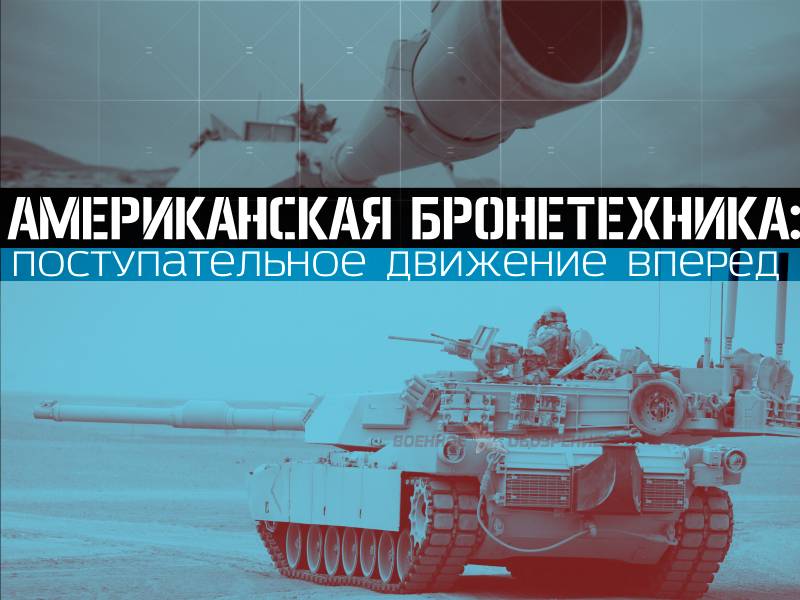
In the United States, quite recently several projects for the development of combat vehicles were being implemented, but at present the emphasis has been placed on updating the existing equipment of armored units.
Most of the recent major development programs for combat vehicles ended in failure: the project for the ground combat vehicle Ground Combat Vehicle (GCV) was canceled in 2014, the project for the family of inhabited ground vehicles Manned Ground Vehicle (MGV) in 2009, and the project on self-propelled howitzer Crusader in 2002 year
At present, the American army is hoping for the success of a new strategy for modernizing military vehicles, rather due to a greater emphasis on the “final state” of the technology than on certain types of weapons. This strategy focuses more on new platforms for infantry units than on armored vehicles.
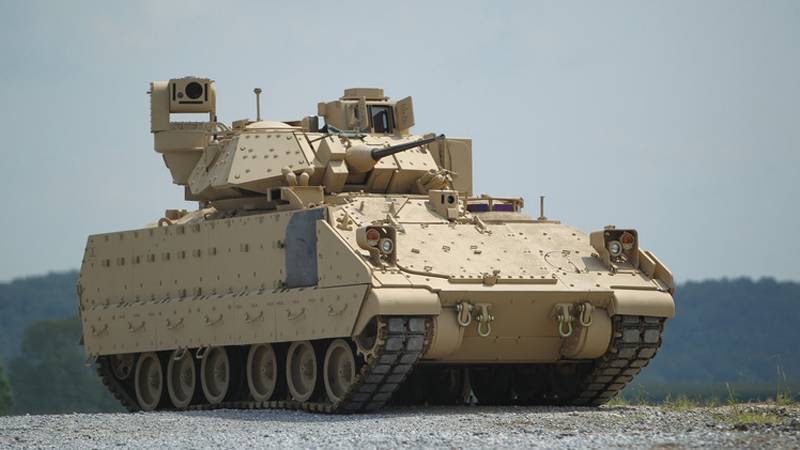
Standard BMP M2AZ Bradley of the American army with an independent sight of the commander mounted on the tower on the right side. As we see, this armored vehicle M2AZ is not equipped with a set of dynamic protection
Nevertheless, the renewal of the fleet of armored vehicles continues due to the so-called proposals for amending the design of the ECP (Engineering Change Proposal). As part of the upcoming AMPV (Armored Multi-Purpose Vehicle) multi-purpose armored vehicle, the obsolete МХNUMX armored personnel carrier will be replaced, while the “promising combat vehicle” may eventually change the Bradley infantry fighting vehicle.
Lieutenant-General McMaster, director of the Army Capabilities Integration Center, said that the army’s combat strategy was designed to provide each unit with a combination of mobility, protection and the power of weapons corresponding to its combat objectives. The recent armored car programs focused on the threats and challenges that were characteristic of the military theaters of Iraq and Afghanistan, and therefore they underestimated the importance of firepower and mobility, and the main emphasis was on increasing the level of reservation and, consequently, survival and preservation of combat effectiveness.
“The new strategy will be primarily aimed at solving the problems with the operational-tactical mobility of infantry brigade groups (IBCT),” said McMaster, “because the opponents' ability to block combat zones has become impressive and therefore units must be able to deploy unpredictably.” However, the army also restores the lost combat capabilities of its armored brigade groups (AST).
Adopted by the U.S. Army more than thirty years ago, the M1 Abrams main battle tank (MBT) is currently "reaching" its latest version of the M1A2 SEPv3. For those tanks a proposal has already been issued to amend the design 1A (ECP1A), and various technical solutions will be tested on the first experimental machines, including the possibility of integrating new network solutions and effectively restoring mass-dimensional and energy-consuming characteristics.
The ECP1A offer, which can begin as early as the 2017 fiscal year, includes increased levels of protection, integration of on-board diagnostics, and the transition from non-replaceable units to quick-detachable modules that are easier to replace due to fewer cables, boxes and circuit boards. The project also updates the digital architecture of the Abrams tank so that you can integrate the gigabit Ethernet data bus and install a new power management system and generator that adds 7840 watts. Under the ECP1A project, an active protection system against improvised explosive devices (IEDs) will also be installed.
Meanwhile, the ECP1B proposal focuses on enhancing firepower, the project adds the third-generation FLIR (forward-looking infrared) front-view thermal imaging system and the ability to fire 120-mm advanced AMP universal ammunition, which combines the capabilities of several projectiles at once. Developments in the framework of the ECP1В project began at the end of last year and are expected to work on it for several years.
In 2016, the army allocated funds for research and development, as well as for the subsequent purchase in order to maintain the efficiency of the production of Abrams tanks at the plant in Lima. In this case, the army is armed with several modifications of tanks at once, aided by the position of the Congress, which sometimes goes against the wishes of the military. According to the documents of the army, in 2016, the program purchased “numerous approved modifications for the M1A2 Abrams tanks in service, including a data channel to the ammunition, so that you can fire a new intelligent projectile, and a low-profile remotely controlled weapon module CROWS (Commander's Remote Operating Weapon Station) ”, as well as equipment for the ECP1A proposal with the aim of launching its installation in 2017 on the basis of the М1А2 modernization program SEPv3
Meanwhile, the US Army in its budget for the 2017 fiscal year has requested 9,678 a million dollars for a new program called Mobile Protected Firepower (MPF). This platform is designed for rapid deployment with relatively low logistic requirements, while it must have adequate protection and firepower to ensure freedom of action for the IBCT brigade groups.
The planning forces of the ground forces hope, ultimately, to deploy the MPF platform so that “the protected platform can provide support with high-precision direct fire and guarantee freedom of movement and actions of its forces during offensive operations or defeat the attacking enemy during defensive operations,” says budget documents of the army.
MBT М1А2 Abrams, manufacturer - General Dynamics Land Systems; combat weight 63086 kg; maximum speed 67,6 km / h, power reserve 426 km. Armament: 1 mounted in the tower 120-mm smoothbore gun М256; 1 7,62-paired machine gun M240, 1 mounted on the roof of the 12,7-mm machine gun; 1 mounted on the roof of the 7,62-mm machine gun M240; 12 launchers grenade smoke screen
The army notes that the IBCT brigades lack the capabilities “to defeat the enemy’s prepared positions, destroy enemy armored vehicles, draw closer to the enemy through fire and maneuver, and ensure freedom of maneuver and actions in close contact with the enemy”.
The army is still clarifying the requirements for the MPF, but at the moment this concept appears to be a light tank, similar to the BAE Systems AGS (Armored Gun System) armored system, which the company presented with pomp during the AUSA conference in October 2015 of the year. The M8 AGS system, classified by the army in the 1995 year and canceled already in the following, was intended to replace the light guns of the M551 Sheridan, which were in service with the 3 battalion of the airborne division.
The AGS, shown on AUSA, was armed with the original 105-mm cannon, but a BAE Systems spokesman noted that the company had also previously installed an 120-mm cannon on the platform while the original program was running and, if necessary, could do it again. AGS cars with a crew of three people were intended for landing on parachute platforms.
In 2017, the army would like to start exploring alternative solutions, analyzing manufacturability, performance and economic feasibility, perhaps analyzing alternative projects, finding new concepts or solutions for modifying existing platforms, and ultimately producing prototypes for the final assessment projects.
The decision to stage Milestone A or Milestone B (respectively, the start of technology development or full-scale development and preparation of mass production) can be made at the end of 2019.
By the beginning of 1995, a total of 6452 Bradley 2 infantry fighting vehicles and MH combat reconnaissance vehicles, which were manufactured at the BAE Systems plant in California, were supplied to the US Army. Saudi Arabia also received its 400 BMN M2 Bradley BMP.
Since its entry into service, the Bradley M2 / MH armored vehicles have been upgraded many times, including the A1, A2 and A3 configurations, as well as several sub-options. These upgrades were due to technical progress at the subsystem level, as well as the desire to increase the level of machine survivability.
All Bradley M2 / M3 platforms are equipped with a twin turret armed with Orbital ATK Armament Systems dual-feed M242 cannon, an 7,62-mm M240C X-gun with a twin-mounted Raytheon TOW ATGM on its left side.
The combat experience forced the army to increase the Bradley М2 / МЗ protection levels not only against direct-line weapons, but also mines and IEDs. First of all, the passive booking system was improved, followed by dynamic protection units installed on the hull and tower. Adding protection systems contributed to an increase in the total mass of the platform, which in turn led to a deterioration in mobility, a decrease in power density, speed and acceleration.
At the beginning of his career, the M2 / MH Bradley armored car was floating, a water deflector plate was installed in front (photo below), which was folded on the frontal sheet, but subsequently it was removed and the vehicle lost its amphibious capabilities.
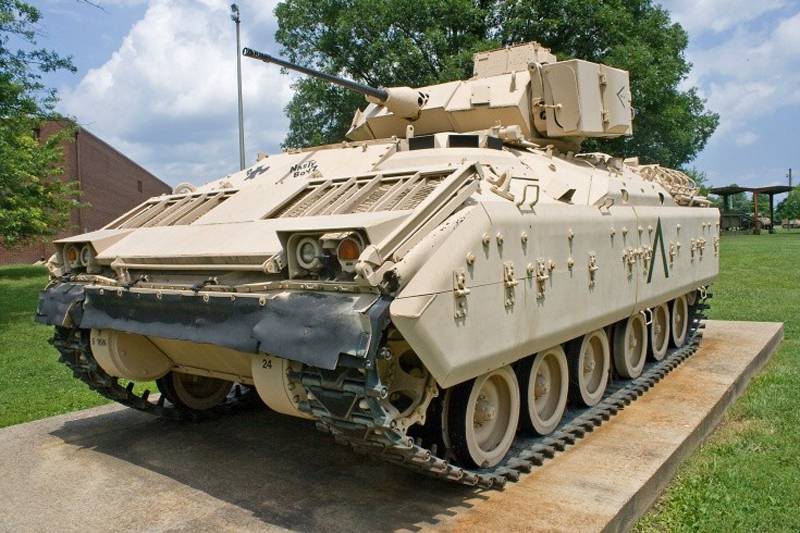
After several futile attempts by the American army to begin replacing the obsolete platform, it was decided to restore Bradley’s combat capabilities through the implementation of a number of ECP proposals that are mainly aimed at restoring its mobility. It was expected that the M2 Bradley will be replaced by a ground vehicle - Manned Ground Vehicle - Infantry Carrier Vehicle armored personnel carrier from the Future Combat Systems (Future Combat Systems) program, but in the end, the entire FCS program and all projects for its combat vehicles were closed due to problems with cost schedule and specifications.
The new GCV program was launched at 2010, development contracts were issued to BAE Systems and General Dynamics Land Systems (GDLS), but for financial reasons the program was closed in 2014 year.
Given how much time it will take to develop a new armored combat vehicle from scratch, it is expected that the M2 Bradley will continue to undergo upgrades, the priority of which will be the firepower of the vehicle.
In this connection, the M2 Bradley armored vehicle equipped with a medium caliber remotely controlled Protector Medium Caliber Remote Weapon Station from Kongsberg, equipped with a double-powered 30-mm gun and a paired 7.62-mm machine gun has been tested. A similar module is currently being installed on Striker armored personnel carriers deployed in Europe as part of “urgent operational needs”.
AMPV program
BAE Systems outstripped (not surprisingly, since it is the original manufacturer) GDLS company in the competition for the AMPV program, in accordance with which it is planned to replace the fleet of M113 armored personnel carriers, some of which were adopted by the American army back in the year 1960.
The M113 has been modernized many times, the latest version with a diesel engine was designated the M113AZ, but in the American army they no longer deploy their M113 in combat operations, as they have a low level of survivability.
Even the newest version of the M113AZ does not have the mobility and protection that is necessary to work together in the same battle formation with the M2 Bradley and M1-X1 / А2 Abrams. Therefore, AMPV will replace the specialized versions МХNUMXА8, which are in service with army AST brigades.
In December, 2014, BAE Systems won the 52-month contract for the full-scale development and pre-production (EMD) phase and the initial AMPV production phase.
According to the EMD phase, a total of 29 AMPV platforms should be delivered and production of machines has already begun at the BAE Systems plant in Pennsylvania,
The initial production phase of this contract provides for the manufacture of 289 machines, and in accordance with current plans, it is expected that 2907 AMPV machines can be purchased in five versions, each of which will replace the corresponding version М113А3. This 120-mm mortar transporter, commander, medical evacuation, sanitary and versatile option.
The AMPV project is based on the upgraded M2 Bradley case with a tower, removed and modified for special tasks.
According to James Miller, Director of Business Development at BAE Systems Combat Vehicles, “AMPV will have the same level of mobility and protection as M2 Bradley.” About 2000 old Bradley M2 / MH machines are in storage and will be used for the AMPV project.
Some of the more specialized AMPV variants for the purpose of increasing the internal volume will have a roof raised just behind the driver’s seat.
The state-owned Red River Army Depot plant will be disassembling the Bradley M2 / MH machines; Air Methods DRS Technologies and Northrop Grumman are also involved in the project.
BAE Systems regards the AMPV project as a low-risk program, since it has already manufactured its own vehicles in all versions.
M2A3 Bradley infantry fighting vehicle, manufacturer BAE Systems. Combat weight 32659 kg, maximum speed 61 km / h, power reserve 400 km. Armament - 25-mm gun M242, 2 ATGM TOW, paired 7,62-mm machine gun М240С, 8 PU smoke grenades
Howitzer Orders
The US Army received a total of 957 155-mm / 39 self-propelled howitzers МХNUMXА109 Paladin, which are essentially a modernized body М6 with a new turret, armed with an 109-mm M155 gun manufactured by Watervliet Arsenal. It was expected that it would be replaced by an 284-mm self-propelled howitzer (SG) Crusader and the corresponding ammunition transporter, but in 155, the program was closed.
The project on the 155-mm / 38 klb gun for indirect fire was also closed - the NLOS-C howitzer (Non-Line-of Sight - Cannon), which was part of the FCS program. After canceling the 2009 project for a manned ground vehicle manned ground vehicle project, the NLOS-C program received “top priority”, but it was also ultimately closed.
The latest SG M109А7, formerly called the PIM program (Paladin Integrated Management - the integrated management of the Paladin self-propelled howitzer program), combines the upgraded M109А6 Paladin tower and the new building, which includes many elements of the upgraded Bradley armored vehicle, including suspension and detached wagon. The latter consists of a Cummins diesel engine with an 675 horsepower. and automatic transmissions of a series HMPT-800 of production of the L-3 Combat Propulsion Systems company.
The 155-mm / 39 gun of the M284 klb has been abandoned; it can fire the entire family of 155-mm ammunition, including the 155-mm High-Precision Raytheon X-ray Ammunition, used in conjunction with the Modular Artillery Charge System modular artillery charges.
In addition, the accuracy of traditional 155-mm unguided projectiles is enhanced by the introduction of the Orbital ATK Armament Systems high-precision M1156 kit. It can be quickly installed on a traditional 155-mm artillery projectile and, thereby, significantly increase its accuracy.
The production of the M109А7 howitzer began; It is expected that a total of 580 platforms will be procured along with the corresponding number of MXXUM PAM-CAT ammunition carriers (Carrier Ammunition Tracked). The first batch of serial machines M992А109 PIM was released in the middle of 7 of the year.
Last summer, the Inspector General of the United States Department of Defense raised questions regarding the ability of the new SG to reach the maximum rate of fire provided by the performance characteristics and the need to install an additional fire detection and extinguishing system in the habitable unit.
5 August 2016, the report of the Ministry of Defense inspector noted that the howitzer had not reached its maximum rate of fire during the tests in 2012 and 2013. After some improvements in the software and tactics, the maximum rate of fire was nevertheless achieved, but only in “relaxed firing conditions”. The auditors recommended, and the army agreed with them, that tense and unstressed shooting conditions should be clearly differentiated before operational tests.
The inspector's report also argued in favor of installing an automatic fire extinguishing system AFES (automatic fire extinguisher system) in the manned howitzer compartment to protect the crew members there. Without this system, the army runs the risk of “having cars that do not meet operational requirements and that could endanger crews and cause costly machine modifications to solve the lack of AFES”.
For their part, the office of the GCV program noted that the existing army SGs do not have an automatic fire extinguishing system and, therefore, it would be more prudent to begin the early deployment of МХNUMXА109.
In the meantime, most NATO members have switched to the 155-mm / 52 KL gun, as it has a significantly longer range. In connection with these developments, BAE Systems has developed for the export market a variant of the M109 International howitzer, armed with the 155-mm / 52 klb barrel of Watervliet Arsenal, but it did not enter service.
Later, the Armed Weapons Research Center (ARDEC Research, Development, and Engineering Center) financed the development of an ERCA extended-range cannon artillery 155-mm artillery gun, designated XM907. The layout of the 155-mm / 52 ERCA cannon klb was installed on an 155-mm towed howitzer М777А2, taken in one of the operating units; It is expected that for the first firing tests a new gun will be installed on the M109-X7 Paladin.
In addition to the actual gun itself, the ERCA project envisages the development of an XM1113 active-projectile. enhanced charge ХМ654, automatic loader and a new fire control system.
BAE Systems continues to promote the M109А5 in the export market and has already sold its system to Greece, Taiwan and Thailand. The newest version M109A5 + is also currently offered for the export market. It contains an 155-mm gun with a length of 39 caliber, but features an integrated radar for measuring the initial speed, a modernized suspension, a new power unit, a system of protection against weapons of mass destruction, a new commander display, a positioning and navigation system, a new weapon control system and an 80 Ampere generator.
Brazil is expected to order a batch of 36А109 + 5 howitzers, while Mr. Miller said that he is forecasting "significant export sales of M109A5 modified artillery systems".
BAE Systems also counts on the export potential of the upgraded artillery systems М109А6 as part of the program of sales of military equipment to foreign countries or through direct sales. Although the US Army is armed with a total of 957 M109А6 Paladin self-propelled howitzers and the corresponding M992A2 FAASV ammunition conveyors, only 109 systems must be upgraded to the latest M7А580 PIM standard.
Self-propelled howitzer М109А7 Paladin produced by BAE Systems. Combat weight -35380 kg, maximum speed 61 km / h, power reserve 322 km. Armament: 155-mm / 39 klb gun M284, mounted on the roof of the 12,7-mm machine gun M2 HB
BREM M88A2
The M88 has for many years been a standard armored repair and recovery vehicle (BREM) of the American Army. The newest version М88А2 has undergone a corresponding upgrade in order to be able to evacuate heavier combat vehicles, for example, MBT M1X1 / А2.
М88А2 is also known under the designation HERCULES (Heavy Equipment Recovery Combat Utility Lift Evacuation System - combat engineering lifting and recovery system for the evacuation of heavy machinery) and is distinguished by more powerful winches and lifting equipment, additional armor and a more powerful power unit.
BREM M88X2 US Army and Marine Corps are refined from previous versions MXXXX88, although new vehicles were sold to Australia (1), Egypt (7), Iraq (88), Kuwait (16) and Thailand (14). There is also potential for additional export sales, as Saudi Arabia has recently requested 6 MBT M153A1 / A1, which will be converted into 2 M133 A1S and 2 BREM M20X88, and all this 2 billion XRUMXS and 1,15 XRUMX BREM XXNUMX and all this for XNUMX billion and all for XNUMX billion
The US Army has a need for 933 BREM M88A2 and Marines in 100 machines (of which 84 were supplied).
Among the recent contracts of the American Army for the revision of the M88А1 version of the М88А2, we note the contract from June 2015 of the year for 36 machines (for 110 million dollars) and the contract of April 2016 for the revision of 36 machines (also for 110 million dollars).
Works on М88А2 are conducted at the plant of BAE Systems in Pennsylvania and South Carolina. Current contracts must be completed in August 2018. Anniston Army Depot dismantles the machines M88А1 and then delivers it to the plant of BAE Systems, which actually carries out the modernization.
Armored repair and recovery vehicle M88A2
Floating machines
In January 2011, Secretary of Defense Robert Gates and the Commander of the Marine Corps (ILC) announced the cancellation of the Expeditionary Fighting Vehicle (EFV) expeditionary vehicle program, which already cost 3 a billion dollars to develop. But according to calculations, it was necessary to spend another 573 billion dollars for the revision and purchase of 12 EFV machines, and therefore the project became “just not affordable”.
This was followed by several concepts that were all rejected, and then the ILC decided to use the Marine Personnel Carrier armored personnel carrier program as a replacement - previously it was considered as an addition to the EFV. After that, the MPC project was renamed the ACV 1.1 Amphibious Combat Vehicle (Amphibious Combat Vehicle).
In November, KMP issued to the teams headed by BAE Systems and SAIC companies the contracts for the production of pilot machines for the ACV 2015 program and their supply in the 1.1 year.
BAE Systems, together with the Italian manufacturer Iveco Defense, presented the car (photo below) with a six-cylinder engine, the 700 hp, for review. "With hanging seats on 13 carried infantrymen."
SAIC, together with Singapore Technologies Kinetics (ST Kinetics), introduced the Terrex 2 armored vehicle (photo below), which has a V-shaped hull and enough space to accommodate 11 infantrymen and three crew members (to get additional volume for two infantrymen it would have to be rearranged and the concomitant increase in mass that the company considered redundant).
KMP first of all buys test machines from each 13 developer, then three more, which will be 16 pieces from each contestant. Additional vehicles will reduce the trial period by reducing the time for repairs, and the infantrymen will be better able to learn these platforms.
The selection of machines for initial production in small quantities is expected by April or May 2018, then the selected company will manufacture more 4 machines for firing tests. After that, 204 serial machines must be deployed in units before full-scale production begins.
According to the ACV 1.1 program, only armored personnel carriers will be manufactured, which according to preliminary estimates will cost around 1,2 a billion dollars, but the winner will also be able to get an ACV 1.2 contract, under which 409 vehicles can be purchased in other versions.
William Taylor, program manager for ground systems at KMP, said that we can talk about the initial date for admission to the units of the ACV 1.1 program in 2020 and the ACV 1.2 program in less than three years.
The US KMP from about the year 2025 will start searching for the ACV 2.0 machine at high speed on the water, which is likely to be similar to the EFV platform, or, alternatively, buy about 700 ACV 1.3 machines to replace the existing AAV-7A1 amphibious assault vehicles. Assault Amphibious Vehicle.
Over the next four or five years, the US Army hopes to upgrade its MBT M1A2 Abrams, BMP Bradley and Stryker combat vehicles, while slowly adopting the AMPV to replace the outdated M113 BTR. In the period from 2021 to 2029, the army plans, first of all, to increase the firepower of its infantry brigades and Stryker brigades through possible purchases of the previously mentioned MPF light tank, and the “lethality” of armored brigades through machines upgraded in accordance with the ESR.
However, perhaps one of the next steps will be the emergence of crewless or, optionally, crew ground vehicles and joint fighting of inhabited and uninhabited systems.
This could facilitate the adoption of lighter platforms that require less reservations, while the personnel would be freed up for other tasks. For example, optionally, the crew of the BMP could transfer soldiers on the battlefield, land them and then move to another place on their own or join combat operations using a remote control system.
Materials used:
www.shephardmedia.com
www.gdls.com
www.baesystems.com
www.stengg.com
www.wikipedia.org
en.wikipedia.org
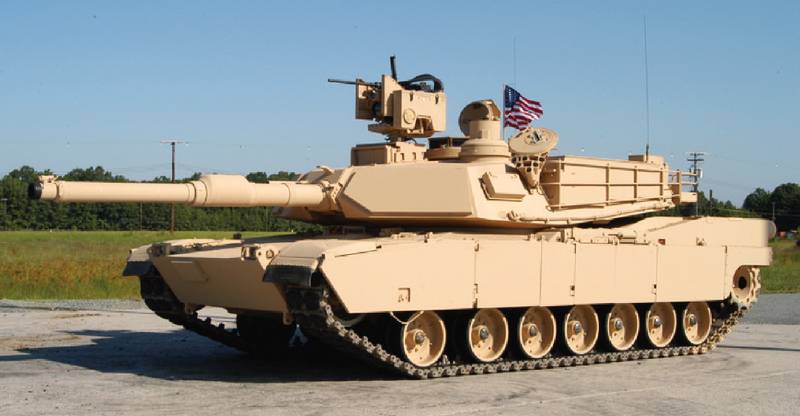
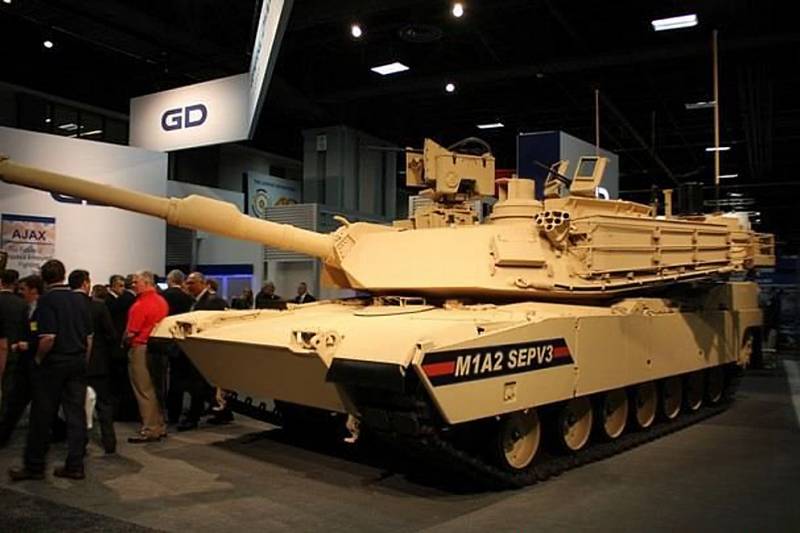
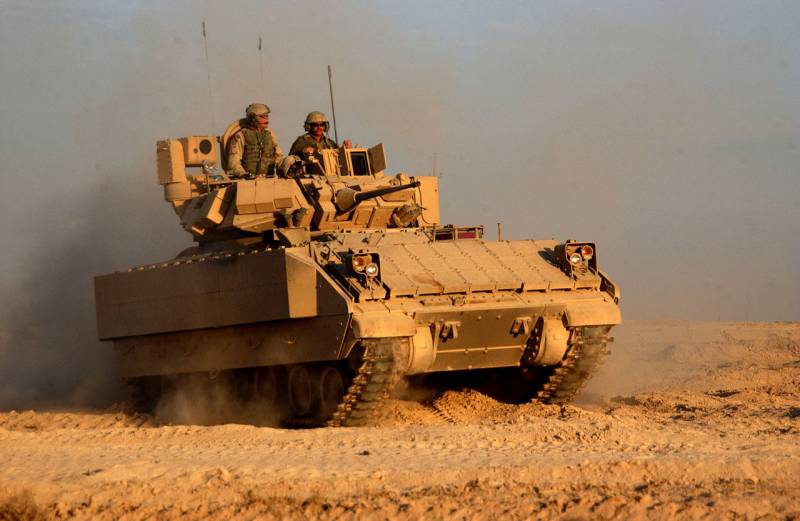
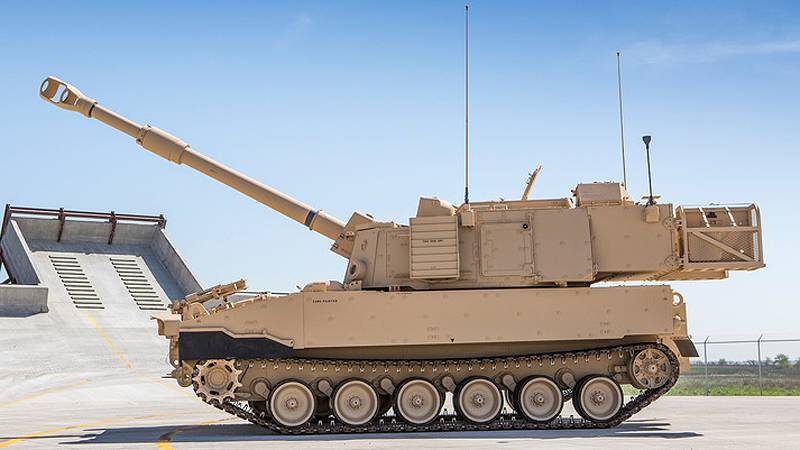
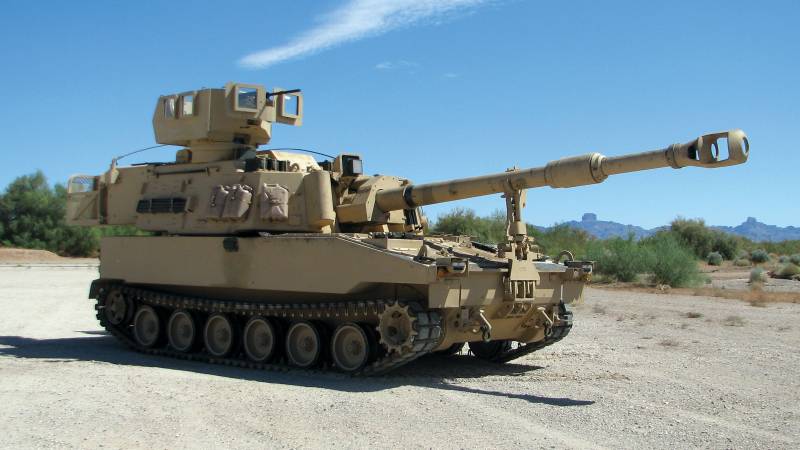
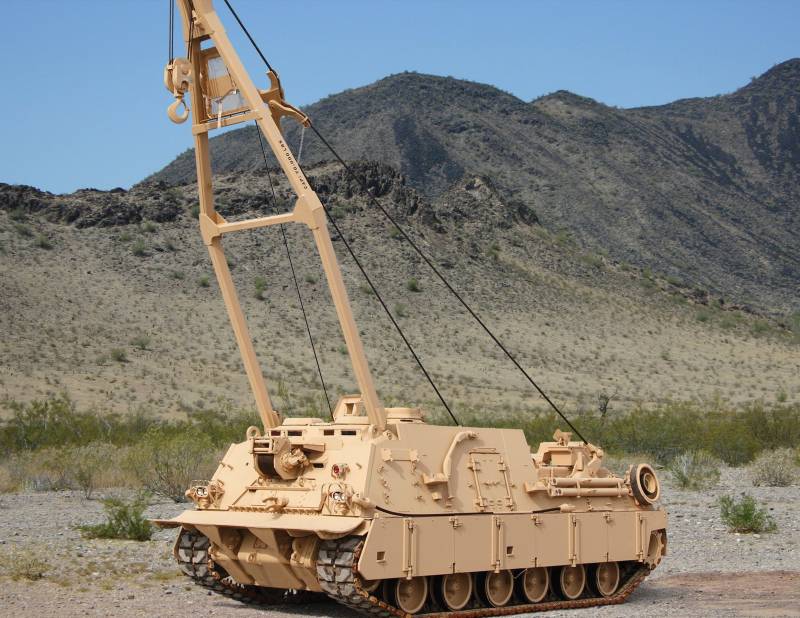
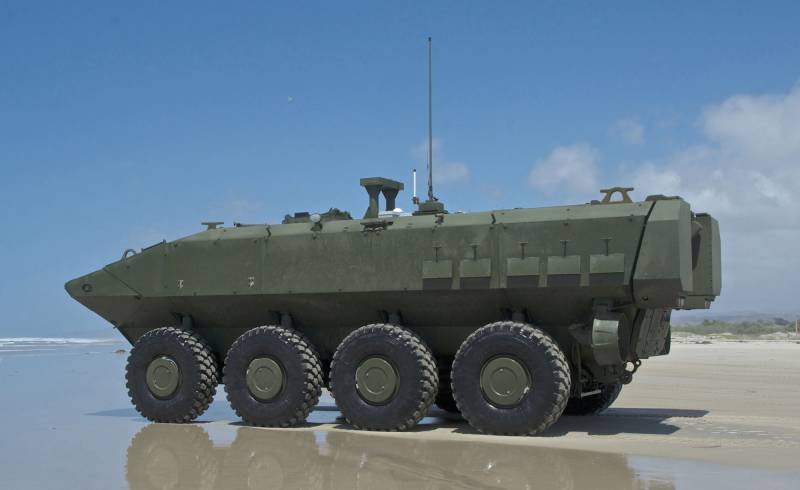
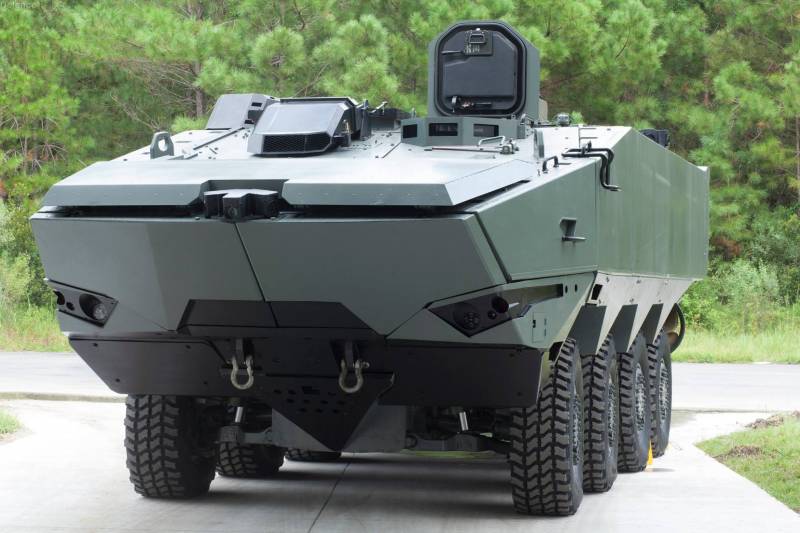
Information